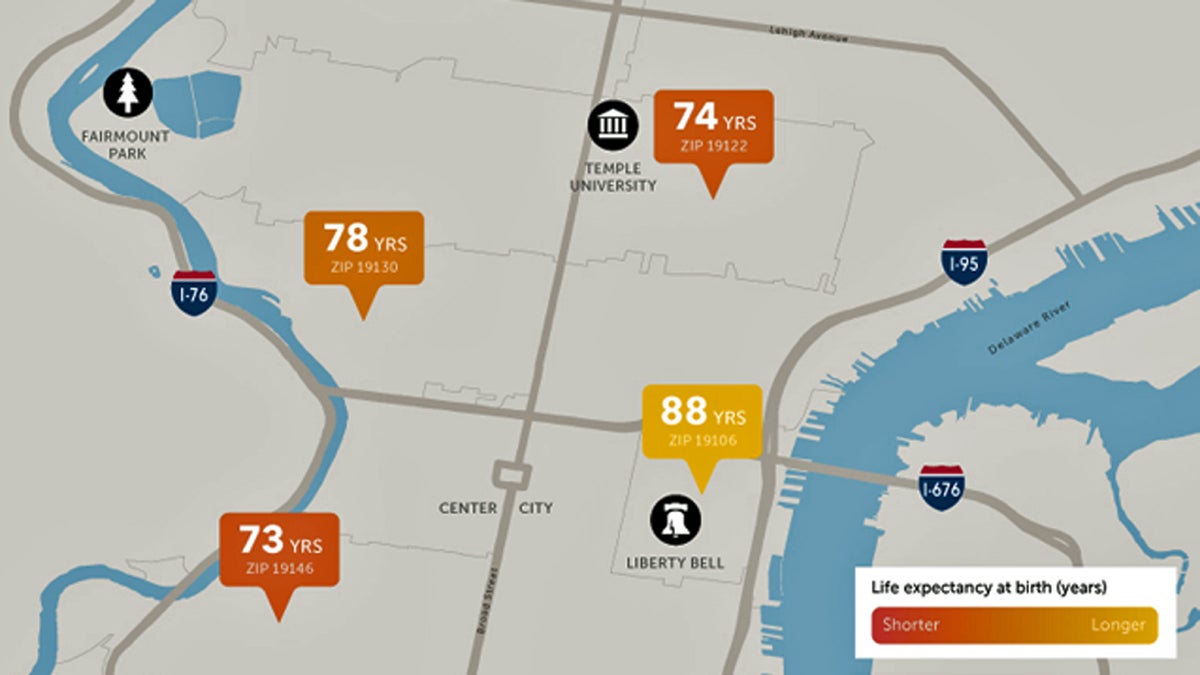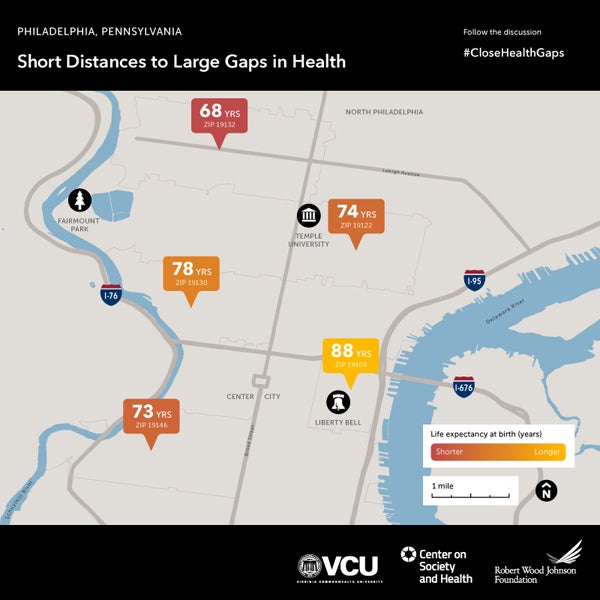A few miles and a world of difference as study finds wide disparity in Philly life expectancies

Strawberry Mansion is only about five miles from Society Hill. But a child born today in the low-income North Philadelphia neighborhood can expect to die at age 68, 20 years earlier than if she were born in the more affluent Center City ZIP code.
A new series of maps and studies from Virginia Commonwealth University and the Robert Wood Johnson Foundation calculated life expectancies across more than a dozen American cities.
“Where you live can directly influence your health, like exposure to violence or pollution, but it also can limit the choices available, in terms of living a healthy lifestyle,” says Derek Chapman, associate director of the VCU Center on Society and Health.
At a full two decades, Philadelphia had the largest difference in life expectancies between the best and worst sustaining ZIP codes, outpacing Chicago’s 16-year gap and New York City’s nine-year gap.
The report authors cite a range of causes for health disparities between neighborhoods, including opportunities for education and jobs, availability of healthy foods, clean air and access to primary care services.
“Each community must chart its own course,” said Chapman. “Because the health of neighborhoods is shaped by a web of factors, the key is to get policymakers across that wide range of areas like health, education, housing, jobs and transportation to be part of that conversation.”

WHYY is your source for fact-based, in-depth journalism and information. As a nonprofit organization, we rely on financial support from readers like you. Please give today.

